
Nanoscience and Technology-An International Journal
Scope & Guideline
Shaping the Future Through Nanoscience Insights
Introduction
Aims and Scopes
- Nanomaterials Synthesis and Characterization:
Research related to the fabrication, synthesis, and characterization of nanomaterials, including their structural, optical, thermal, and mechanical properties. - Applications of Nanofluids:
Studies exploring the use of nanofluids in various engineering applications, particularly in heat transfer enhancement and thermodynamic properties. - Nano-Composite Materials:
Investigations into the development and performance of nano-composite materials, focusing on their mechanical and thermal properties for industrial applications. - Theoretical and Computational Modeling:
Research employing theoretical and computational methods to model the behavior of nanoscale materials and systems, including simulations of fluid dynamics and heat transfer. - Environmental and Biomedical Applications:
Studies highlighting the applications of nanotechnology in environmental remediation and biomedical fields, such as drug delivery systems and biosensors.
Trending and Emerging
- Hybrid Nanofluids and Heat Transfer:
An increasing number of studies focus on hybrid nanofluids, which combine multiple nanoparticles to enhance thermal conductivity and improve heat transfer efficiency in various applications. - Green and Sustainable Nanotechnology:
There is a growing interest in sustainable practices in nanotechnology, including the synthesis of nanomaterials using environmentally friendly methods and their applications in green technologies. - Nanotechnology in Biomedical Applications:
A significant trend is the exploration of nanotechnology in biomedical applications, particularly in drug delivery, imaging, and biosensing, highlighting its potential in healthcare innovations. - Advanced Characterization Techniques:
Emerging research emphasizes advanced characterization techniques for nanomaterials, including in-situ and real-time monitoring of properties at the nanoscale, facilitating deeper insights into material behavior. - Quantum Dots and Nanostructures:
The exploration of quantum dots and other nanostructured materials for applications in electronics, photonics, and energy conversion is increasingly prevalent, showcasing the potential for novel applications.
Declining or Waning
- Conventional Material Studies:
Research focusing on traditional materials without the incorporation of nanotechnology has decreased, indicating a shift towards more innovative and advanced materials. - Basic Theoretical Studies:
There has been a reduction in purely theoretical papers that do not include experimental validation or practical applications, suggesting a preference for studies that bridge theoretical insights with practical outcomes. - Low-Impact Environmental Studies:
Papers dealing with low-impact environmental studies without significant nanotechnology applications have waned, reflecting a growing emphasis on high-impact, technology-driven environmental solutions.
Similar Journals

Journal of Applied Mechanics and Technical Physics
Unveiling Breakthroughs in Mechanics and Material ScienceJournal of Applied Mechanics and Technical Physics is a distinguished publication that serves as a vital resource for researchers and professionals in the realms of mechanical engineering, mechanics of materials, and condensed matter physics. Published by MAIK NAUKA/INTERPERIODICA/SPRINGER, this journal has been committed to disseminating high-quality research since its inception in 1965. With a noted presence in the academic community, it holds a respectable Q3 ranking in multiple categories as of 2023, indicating its relevance and contribution to the field. Although it does not currently offer open access, the journal provides valuable insights and advancements through its rigorous peer-review process. Covering a broad spectrum of topics in applied mechanics and technical physics, it aims to foster innovation and dialogue among scientists, engineers, and scholars alike. Located in the United States, the journal continues to make significant strides in bridging the gap between theoretical research and practical applications, making it an essential read for anyone engaged in these dynamic fields.

Physics and Chemistry of Solid State
Advancing Solid-State Science Through Collaborative ResearchPhysics and Chemistry of Solid State is a distinguished open access journal published by Vasyl Stefanyk Precarpathian National University in Ukraine, dedicated to advancing research in the fields of condensed matter physics, materials science, and physical and theoretical chemistry. Since its inception in 2000, the journal has provided a platform for the dissemination of innovative ideas and original research findings, contributing significantly to the global scientific community. With a variety of access options, it facilitates the sharing of knowledge and collaboration among researchers worldwide. The journal has garnered recognition with respectable rankings in Scopus, positioning itself among the significant publications in its domain, particularly noted for its contributions to materials science and condensed matter physics. As it moves through its converged years from 2018 to 2024, Physics and Chemistry of Solid State aims to foster interdisciplinary dialogue and prepare the next generation of scientists to tackle complex challenges in solid-state research.
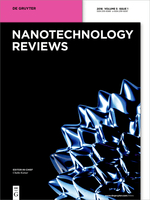
Nanotechnology Reviews
Exploring the Boundaries of NanoscienceNanotechnology Reviews, published by DE GRUYTER POLAND SP Z O O, stands at the forefront of the multidisciplinary field of nanoscience and nanotechnology. With an Open Access model adopted since 2019, this journal, identifiable by its ISSN 2191-9089 and E-ISSN 2191-9097, disseminates vital research that is accessible to a global audience. The journal is located in Germany and has established itself as a premier platform for innovative research, boasting impressive quartile rankings: Q1 across several categories including Biotechnology, Energy Engineering, and Materials Science, as well as a Q2 classification in Biomaterials as of 2023. The diverse scope enables authors to contribute to a range of topics, from biomedical applications to energy solutions and advanced materials, making it essential reading for researchers, professionals, and students passionate about cutting-edge developments. Additionally, with Scopus rankings highlighting its value across various domains and robust percentiles, including 94 in Engineering (miscellaneous), 93 in Medicine (miscellaneous), and 88 in Biotechnology, Nanotechnology Reviews is an influential and respected journal that fosters scientific dialogue and innovation.
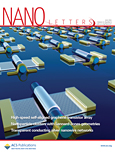
NANO LETTERS
Unveiling the potential of the nanoscale.NANO LETTERS is a leading journal, published by the American Chemical Society, that focuses on the rapidly evolving field of nanoscience and nanotechnology. With an impressive impact factor and consistently ranked in the Q1 category across multiple disciplines including Bioengineering, Materials Science, and Condensed Matter Physics, it serves as an essential resource for researchers and professionals aiming to stay at the forefront of nano-related advancements. This journal, available in print and online (ISSN: 1530-6984, E-ISSN: 1530-6992), features cutting-edge research articles that explore the intricate interplay between nanoscale materials and emerging technologies, driving innovation across various sectors. As of 2023, NANO LETTERS holds prestigious rankings, including a top position in several Scopus categories, underscoring its impact within the scientific community. Published continuously since 2001, NANO LETTERS is dedicated to disseminating high-quality research papers that inspire and inform the next generation of scientists and engineers.
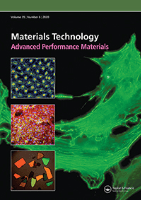
MATERIALS TECHNOLOGY
Advancing the Frontiers of Materials ScienceMATERIALS TECHNOLOGY is a prestigious academic journal published by Taylor & Francis Ltd, based in the United Kingdom. With an ISSN of 1066-7857 and an E-ISSN of 1753-5557, this journal has established itself as a vital resource in the fields of Condensed Matter Physics, Materials Science, Mechanical Engineering, and Mechanics of Materials, earning a Q2 ranking in multiple categories as of 2023. With a rich publication history that dates back to the early 1970s, it serves as an essential platform for disseminating innovative research and developments in materials technology. Although not available through Open Access, the journal continues to attract contributions from leading researchers, ensuring high-quality articles that advance knowledge in the materials domain. The journal's commitment to excellence is reflected in its notable Scopus rankings, placing it within the 70th to 78th percentiles across several engineering and physics categories. As a vital resource for researchers, professionals, and students alike, MATERIALS TECHNOLOGY plays a critical role in shaping the future of materials science and engineering.

Discover Nano
Fostering Innovation through Collaborative ResearchDiscover Nano is a pioneering journal published by SPRINGER, dedicated to the rapidly evolving field of nanoscience and nanotechnology. Established in 2023, this innovative platform provides an open-access forum for researchers, professionals, and students to share and disseminate cutting-edge findings in materials science and condensed matter physics. With its commitment to accessibility, Discover Nano encourages a broad spectrum of contributions, aiming to foster collaboration and stimulate discussion in this dynamic area of study. As a new entry into the academic community, the journal holds great potential for growth, aspiring to increase its visibility and impact in the materials science arena, where it currently ranks in the bottom quartile for both materials science and physics categories. Based in Germany and reaching a global audience, Discover Nano represents a significant opportunity for those looking to shape the future of nanotechnology through impactful research and interdisciplinary dialogue.
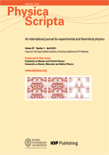
PHYSICA SCRIPTA
Innovating Insights in Atomic and Molecular PhysicsPHYSICA SCRIPTA, established in 1970 and published by IOP Publishing Ltd, is a prestigious journal dedicated to the broad fields of physics, encompassing topics such as atomic and molecular physics, condensed matter physics, and mathematical physics. With an impressive commitment to advancing scientific knowledge, it holds a significant standing in the academic community, evidenced by its Q2 and Q3 rankings across various categories in 2023. The journal is instrumental for researchers, professionals, and students seeking to disseminate and engage with high-quality research, fostering collaboration and innovation within the field. Although it currently does not offer open access options, its robust editorial standards ensure the dissemination of impactful studies, contributing to its rising citation metrics. Published from the United Kingdom, PHYSICA SCRIPTA continues to be a vital resource for contemporary developments in physics, paving the way for future discoveries.
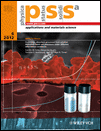
PHYSICA STATUS SOLIDI A-APPLICATIONS AND MATERIALS SCIENCE
Unveiling breakthroughs in engineering and materials.PHYSICA STATUS SOLIDI A-APPLICATIONS AND MATERIALS SCIENCE, published by WILEY-V C H VERLAG GMBH, stands as a prominent journal in the fields of condensed matter physics, materials science, and engineering. With an ISSN of 1862-6300 and E-ISSN 1862-6319, this journal has been actively contributing to scientific discourse since its inception. The journal currently holds a respectable Q2 ranking across several categories including Electrical and Electronic Engineering and Materials Chemistry, demonstrating its significance in advancing research and development within these domains. Although it does not offer open access, the journal ensures high-quality peer-reviewed content that is critical for researchers and professionals aiming to stay at the forefront of materials science innovations. The journal’s convergence years, extending from 2005 to 2024, reflects its ongoing commitment to publishing impactful research. By facilitating discussions on applications and advances in materials science, PHYSICA STATUS SOLIDI A continues to be an essential resource for those striving to contribute to this dynamic field.
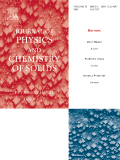
JOURNAL OF PHYSICS AND CHEMISTRY OF SOLIDS
Unveiling the Mysteries of Solid-State MaterialsJOURNAL OF PHYSICS AND CHEMISTRY OF SOLIDS, published by Pergamon-Elsevier Science Ltd, is a distinguished international journal that has been at the forefront of disseminating cutting-edge research in the fields of physics, chemistry, and materials science since its inception in 1956. This journal, which is recognized for its high impact in the Q2 category across multiple subjects—including Chemistry (miscellaneous), Condensed Matter Physics, and Materials Science—serves as a vital platform for researchers, professionals, and students to engage with significant advances in solid-state physics and chemistry. With Scopus rankings placing it in the top 15% of its field across various domains, the journal plays a crucial role in shaping the scientific dialogue surrounding materials properties, synthesis, and applications. Although it does not currently offer open access options, the presented research is widely recognized for its quality and relevance, ensuring that published works contribute meaningfully to ongoing scholarly discussions.

Microfluidics and Nanofluidics
Pioneering Research for Tomorrow's TechnologiesMicrofluidics and Nanofluidics is a distinguished academic journal published by Springer Heidelberg, focusing on the rapidly evolving fields of micro and nanotechnology. With a commitment to disseminating cutting-edge research, this peer-reviewed journal aims to bridge the gap between fundamental science and practical application within Condensed Matter Physics, Materials Chemistry, and Nanoscience and Nanotechnology. It holds an influential position in its field, reflected by its Category Quartiles (Q3) and notable Scopus Rankings, including a ranking of #145 in Condensed Matter Physics. Researchers, professionals, and students will find this journal to be an invaluable resource for accessing pioneering studies, methodologies, and innovative technologies essential for advancing knowledge and applications in micro and nanofluidics. With an extensive history from 2004 to 2024, Microfluidics and Nanofluidics continues to foster discussion and collaboration within the scientific community, solidifying its role as a leading platform for scholarly communication in this dynamic discipline.